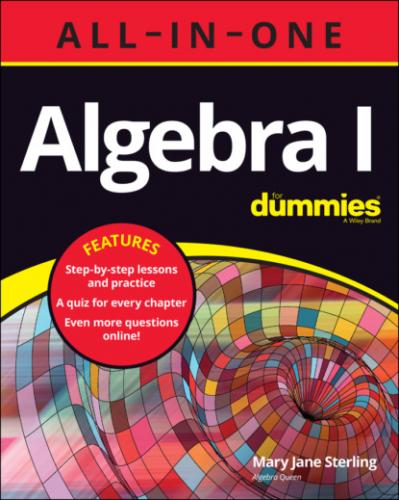5
6 What should you add to the expression
7
8 Distribute:
9 Apply the greatest integer function:
10
11
12 Round to the nearest integer:
13
14 What should you multiply the expression
Answers to Chapter 3 Quiz
1 –11. Work on the braces first. Do the subtraction in the parentheses and add the result to 3. Multiply that sum by 3 and subtract the product from 6. In the last parentheses, find the difference. Then add the result from the braces to this last number.
2 5.932. 5.932 rounds up to 6, and
3 6,642.
4
5 2. Use the commutative property to reverse the order of the middle two factors.
You will find more on operations involving fractions in Chapter 4.
6 5. The additive inverse of –5 is 5.
7 840.
8
9 6. The largest integer that is not bigger than
10
11 4. Use the commutative property to reverse the order of the last two numbers.
12 7.
13 14. First, do the subtraction in the parentheses. Then subtract that result from 4. Finally, multiply by 2.
14 3. The multiplicative inverse of
Chapter 4
Coordinating Fractions and Decimals
IN THIS CHAPTER
At one time or another, most math students wish that the world were made up of whole numbers only. But those non-whole numbers called fractions really make the world a wonderful place. (Well, that may be stretching it a bit.) In any case, fractions are here to stay, and this chapter helps you delve into them in all their wondrous workings. Compare developing an appreciation for fractions with watching or playing a sport: If you want to enjoy and appreciate a game, you have to understand the rules. You know that this is true if you watch soccer games. That offside rule is hard to understand at first. But, finally, you figure it out, discover the basics of the game, and love the sport. This chapter gets down to basics with the rules involving fractions so you can “play the game.”
You may not think that decimals belong in a chapter on fractions, but there’s no better place for them. Decimals are just a shorthand notation for the most favorite fractions. Think about the words that are often used and abbreviated, such as Mister (Mr.), Doctor (Dr.), Tuesday (Tue.), October (Oct.), and so on! Decimals are just fractions with denominators of 10, 100, 1,000, and so on, and they’re abbreviated with periods, or decimal points.
Understanding fractions, where they come from, and why they look the way they do helps when you’re working with them. A fraction has two parts:
or
